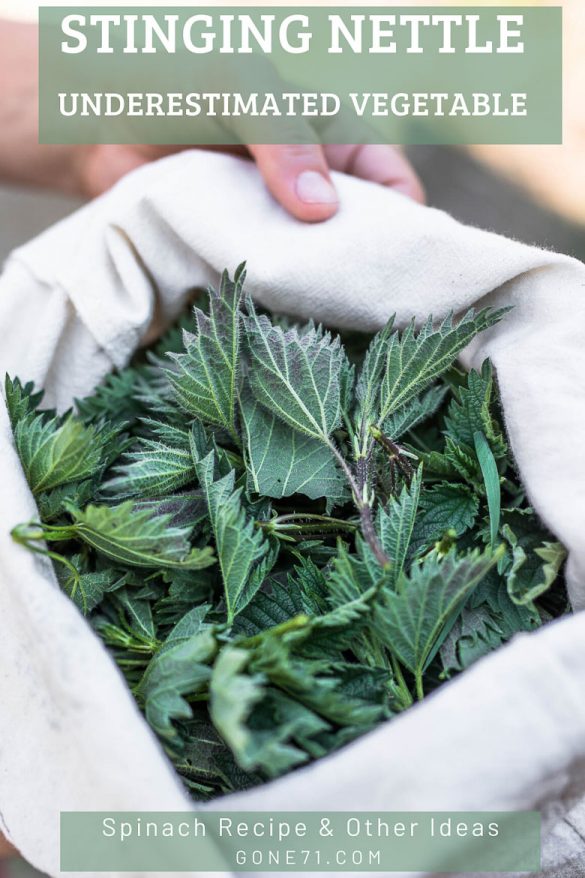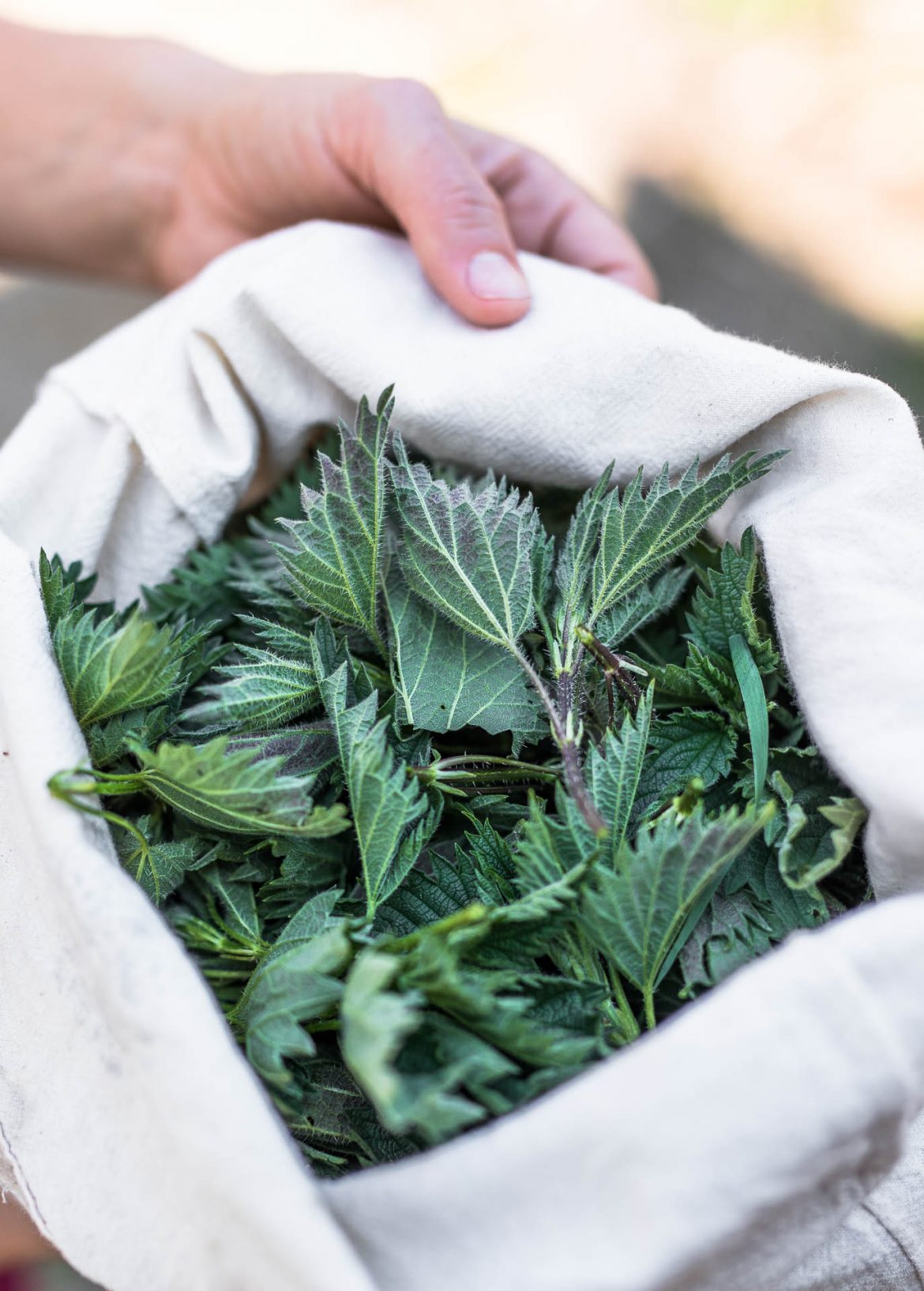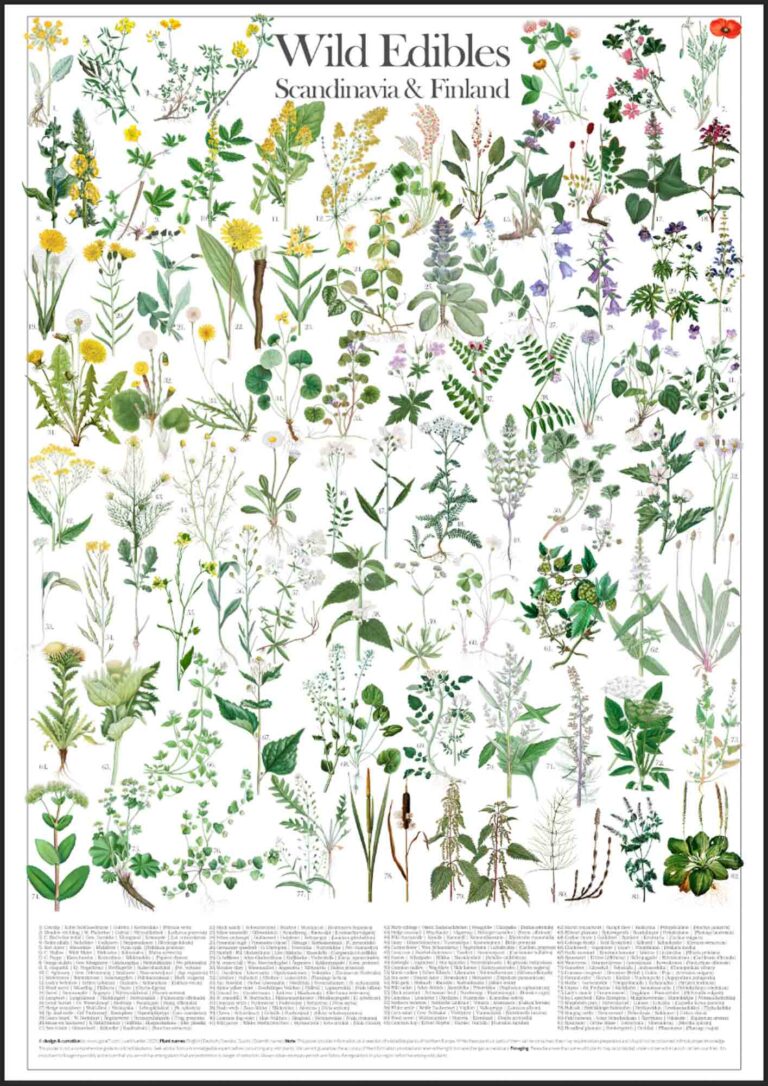Yes, we are actually talking about the ‘weed’ that grows behind the house. Stinging nettle is a widely overlooked ingredient in most kitchens and people categorize it rather as weed than anything else. In this blog we show you step by step how to produce very tasty spinach that is also a colourful enrichment to your cooking. You can find this dish in the Scandinavian kitchen usually in spring and early summer when the younger nettles grow but you can also prepare it later in the year and prepare only the leaves of bigger plants.
We all know sting nettles due to their rather unpleasant skin irritation upon contact – a more or less painful sting caused by the silica in their stinging hair. However, once you worked around this small inconvenience you can process the plant to a variety of delicious dishes, nettle soup being the most popular of them in the Northern countries. Norwegians call it ‘brenneslesuppe’, Sweds ‘nässlesoppa’ and in Finland you’ll find the ‘nokkonen keitto’. However we find the preparation similar to spinach even more interesting as you can use the plant as a wholesome vegetable in your kitchen.
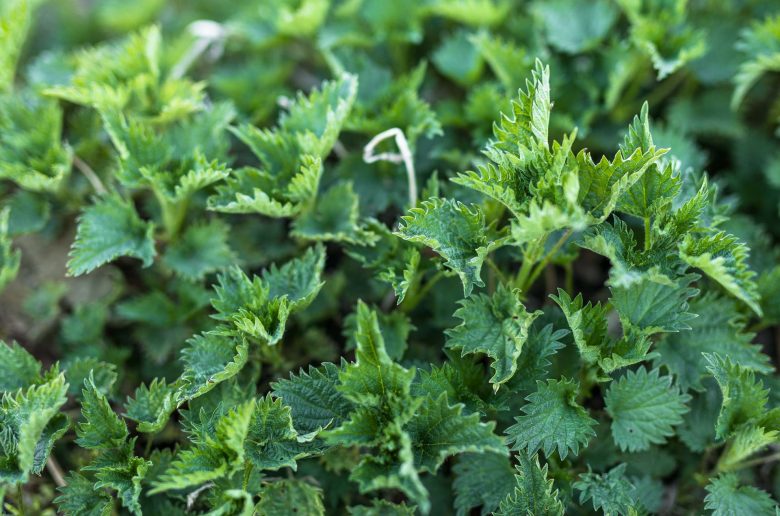
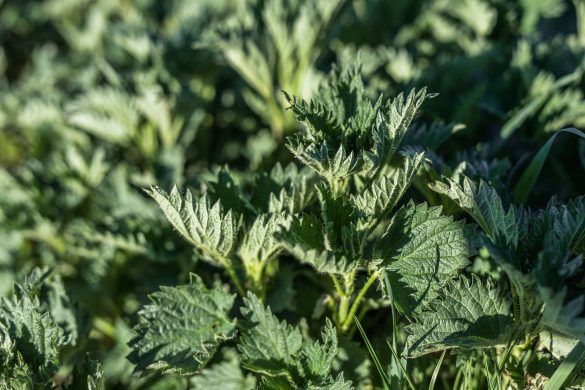
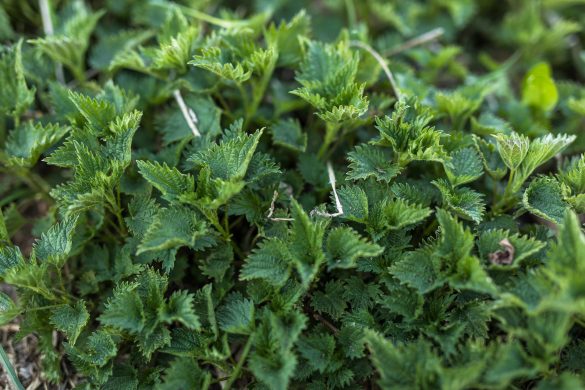
The dish has its origins in the subsidiary folk kitchen. Since they are available during a considerable period in the year they were an important source of alimentation in times of food shortages. They were even promoted during war times as a free and healthy meal due to their high nutrient content.
The two most common species of stinging nettle throughout Scandinavia and Europe are the common- or big nettle (Urtica dioica) and the small- or dwarf nettle (Urtica urens). You can find both of them also throughout Europe and in other parts of the world. Stinging nettles contain a considerable amount of Magnesium, Kalium and even more Vitamin C than citrus fruits.
Harvest Stinging Nettle
To protect you against the stinging hairs we highly recommend leather gloves for harvesting. Thicker gardening gloves will do the job too but beware of fabric gloves since the fine hair will come through. Also make sure that you have the proper clothing – sandals and shorts are for obvious reasons not the best option.
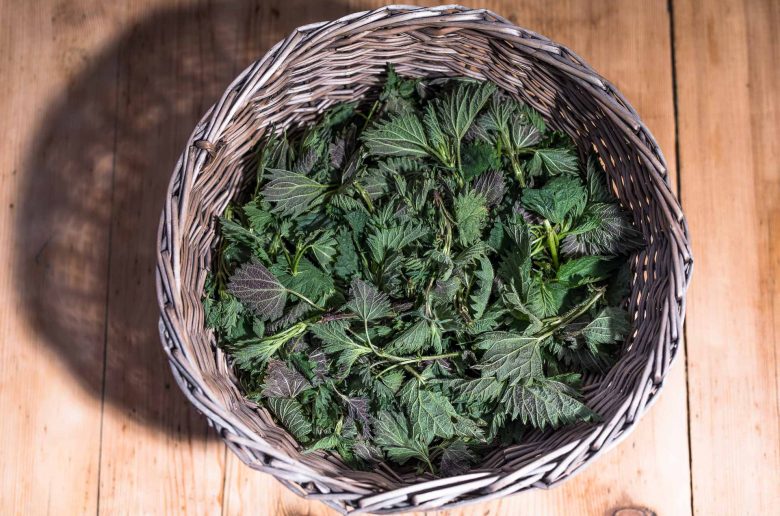
The best way to harvest nettles is to cut the whole plant at the bottom with a pair of scissors or a sharp knife. Picking single leaves is far less effective. Hold the plant tight in one hand and cut the stem with the other. You can also simply pluck the younger plants if you do not have any tools to cut them.
If you do not have gloves and still want to harvest nettles without mayor stinging incidents you can use a trick. If you brush the leaves from bottom to top the plant will not sting since you are brushing in the direction of the fine hair. It’s a bit like petting a cat. If you do it in the wrong direction she’ll let you know. We admit that it is a bit a trial and error experience but once you master this technique you can harvest them whenever you see them even without gloves.
Remember that the plant is not dangerous to humans and it’s really no problem if you get stung. In medicine the nettle acid is even used against rheumatism and considered rather healthy.
Where and when to pick
Avoid picking the plants close to roads or other contaminated areas. They prefer nitrogen rich soils and usually grow on partially shaded meadows, forest edges and riversides. The best time for your harvest is May, June and July when you can still find young shoots. They have fewer nitrates than older parts. In general you can use and process all parts of the plant but for our purpose we stick with the leaves and young stems. After harvesting, the nettles should be processed rather quickly. Otherwise their aroma will evaporate.
Stinging Nettle Recipe
You can use this plant in a similar way as you would normally use spinach. And no worry, the cooking process neutralizes the acid and destroys the stinging hairs. If you use only the sprouts of younger nettles you can process the stems without any problems. The whole cooking process should take you around 15 to 20 minutes.
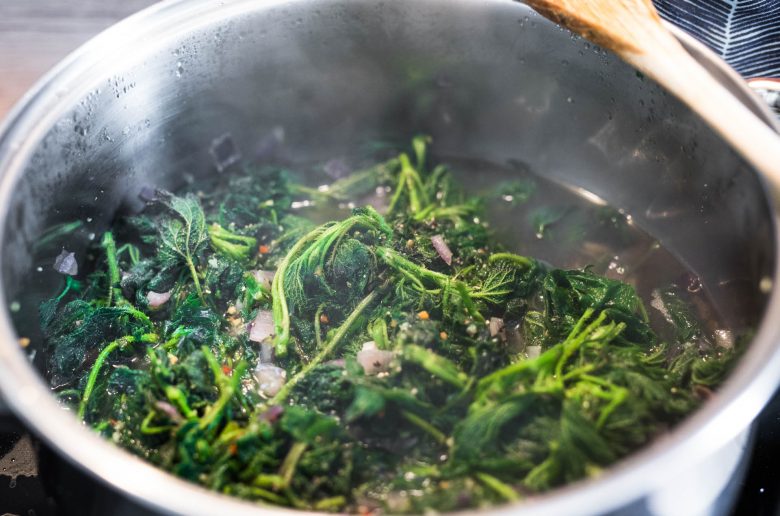

Ingredients
500 grams fresh sprouts of stinging nettles (rinsed)
1 decent onion
220 ml vegetable or chicken stock
salt, pepper
olive oil
optional 1: 1 egg for each serving
optional 2: sour cream or vegan alternatives
Instructions
- Rinse the nettles under water in order to clean them. Don’t wash them too much or they will loose their nutrients and aroma.
- Cut the onion in fine cubes and sweat them in olive oil. Be careful not to burn them, they should not be fried.
- Deglaze the onions with your stock and add the nettles. Let everything simmer for about 10 minutes with the lid closed. Stir occasionally until all leaves have collapsed. The nettles loose significantly in volume when cooked but for 500 grams you’ll need a rather large pot to begin with.
- Add salt and pepper and mix everything with your (hand) blender. We like to have some consistence in the final spinach so we usually blend it only a little. If you like it more like crème spinach, keep on the blender for a while. Refine with crème as desired.
- You can serve the spinach with fried egg and potatoes. We like things simple and served cooked potatoes in our recipe. Alternatively you can also fry them to pep things up a little.
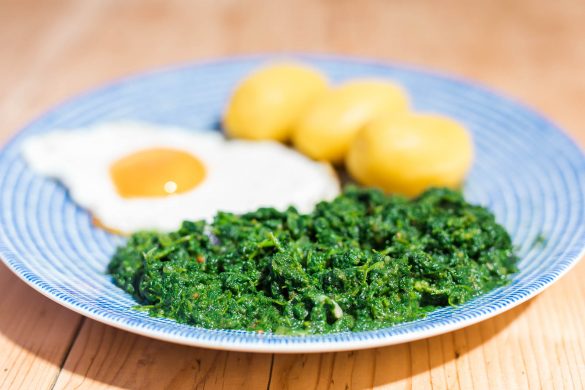
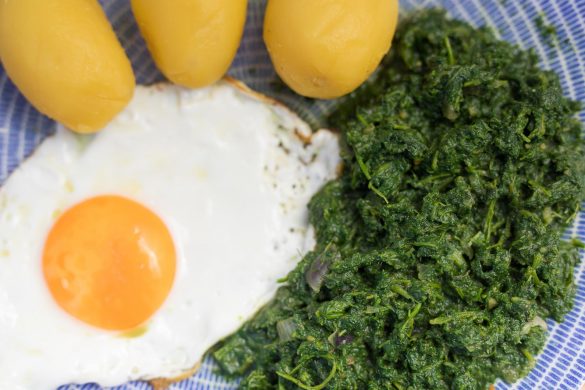
Get also inspired by some of our other Northern recipes:
Find more inspiration in some of our other poster designs
↓↓↓
